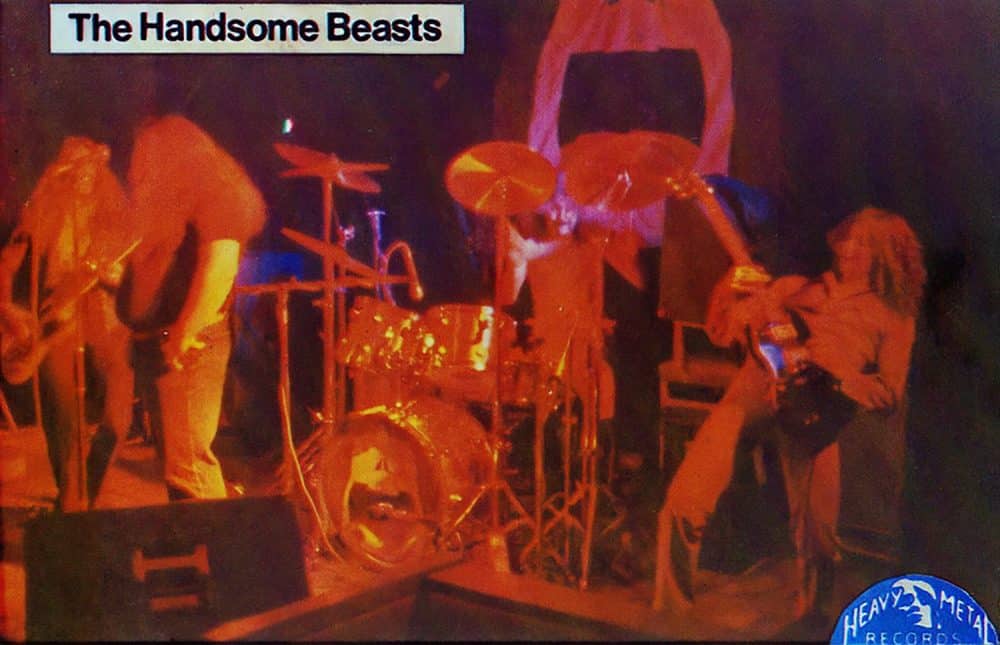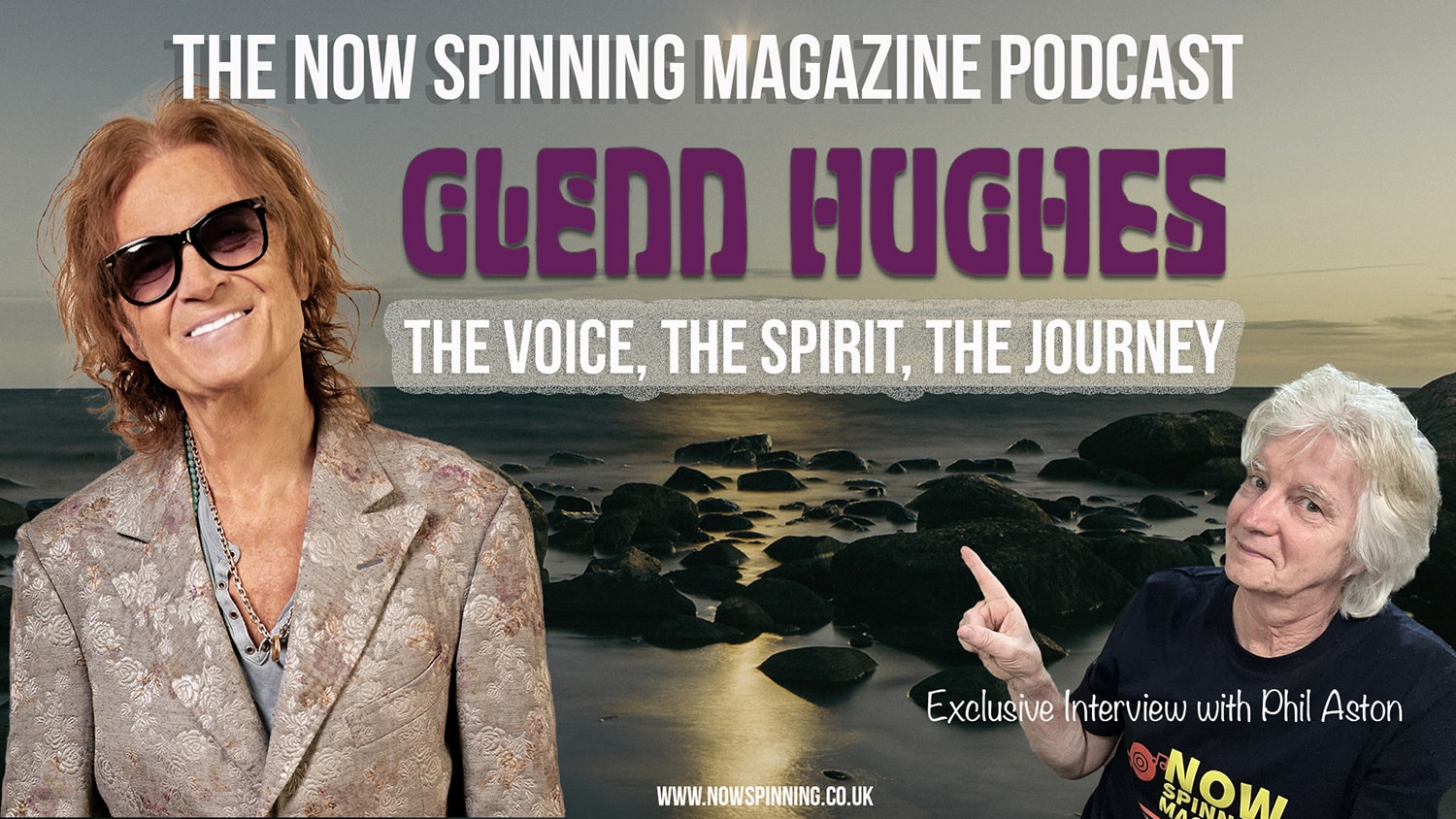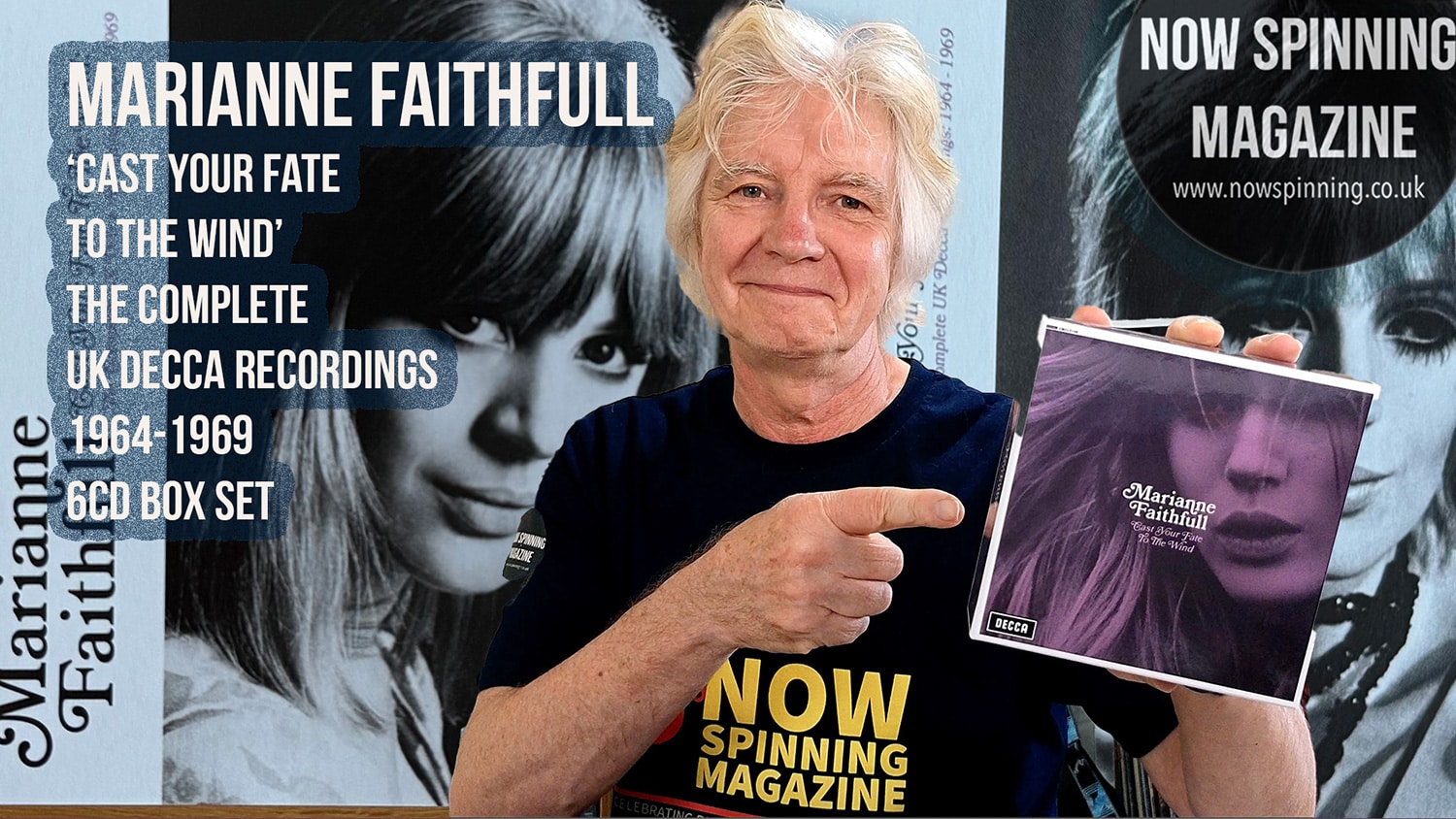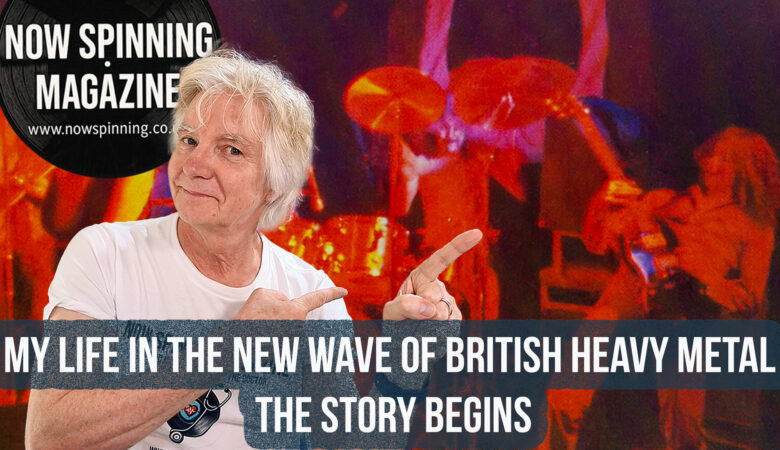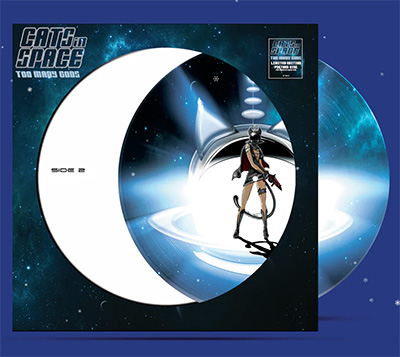The New Wave of British Heavy Metal
This is the introduction to a video series I’m about to start – a personal look back at the New Wave of British Heavy Metal, and the part I played in it. It was a bit part, but it was a part. And I was there when all of this was happening.
My name’s Phil Aston from Now Spinning Magazine, and over this series, I’ll be reflecting on that incredible period of music, drawing from personal experiences, memories, gigs, and stories from the road. I’ll also be using the brilliant book Denim and Leather: The Rise and Fall of the New Wave of British Heavy Metal by Michael Hann as a reference point. I’m featured in that book, and I’ll be using some of the bits where I’m mentioned as a jumping-off point to go into more detail about what was really happening on the ground.
One of the key points Michael makes in the book – and it’s important – is that the New Wave of British Heavy Metal wasn’t like punk or grunge. It didn’t emerge from a single location like Seattle or a few clubs in London. Punk was a rebellion. It came out of a handful of bands and blew up from there. You could say the same for the blues boom out of London in the ’60s.
But NWOBHM? It wasn’t rooted in one place. It was a term really invented by Sounds magazine and Jeff Barton, as a way to identify and champion the growing scene of grassroots British rock bands that weren’t old dinosaurs – they were young, loud, and just getting started. Sounds leaned more towards rock and metal, especially after NME went all-in on punk and dismissed everything else as irrelevant.
So, what made NWOBHM feel like a movement – even if it wasn’t one in the traditional sense?
It was the fans. It was us.
To us, rock wasn’t done. I left school in 1975 at 16 years old. I’d seen Deep Purple two years earlier. I was just discovering bands like UFO and Judas Priest. Physical Graffiti was the soundtrack to me leaving school. I was into Black Sabbath, Montrose, Led Zeppelin – I was just getting started. So when punk came along shortly after, proclaiming the “old wave” was over – I hadn’t even had time to enjoy it yet!
I was just getting pocket money. Just buying records. Starting to think about forming a band. To me, heavy metal was new, not old. And I didn’t want it pushed aside.
At first, I didn’t get punk. It sounded rough. They couldn’t play properly – or so I thought. Compared to what I was listening to, it sounded like rubbish. But then I realised – this was music for people who couldn’t be Steve Howe or Ritchie Blackmore. That was me. I could play a few chords and some blues scales, but I wasn’t going to be a guitar god just yet!
And in that realisation was a spark. Punk, with its attitude, actually turbocharged a lot of us. It lit a fire. The bands that came out in 1979 and beyond – Iron Maiden, Samson, Def Leppard, Saxon – they were different. Even if they now say they weren’t part of NWOBHM, they were. We all were.
I played in bands like Handsome Beasts. I played the Soundhouse. I was signed to Heavy Metal Records. I lived it. And that’s what I want to share with you in this series – the gigs, the stories, the bands we supported, the road trips, the aspirations, the highs and the lows.
Because for many of us, this wasn’t just music. It was escape. I was heading into a factory job, because that’s all that was on offer. Office jobs were for the bright kids. I didn’t even know what people did in offices. There weren’t computers yet, so what was it?
But music… metal… that was a way out.
I had a guitar. I had dreams. I went to rock pubs, saw bands, felt part of something. And I wasn’t alone. That was the dream for many young working-class kids in the ’70s. Be a footballer. Or be in a band.
The look of NWOBHM also became part of the scene. Suddenly we had bullet belts, spray-on spandex, leather jackets, leopard print t-shirts, leg warmers, pixie boots. Even though the music wasn’t that different from earlier bands, the presentation was. It was louder, brasher – and in some ways, that later became its downfall when grunge came along with a stripped-back look and sound.
But this series isn’t about analysing trends or looking down on any of it. It’s about honouring it.
And part of the reason I want to do this now is because time is catching up with us. I’ve done so many tribute videos recently – for people I grew up with, who were 10 to 15 years older than me: members of Deep Purple, Black Sabbath, Genesis, Yes, Wishbone Ash.
But now, I’m seeing people from my generation – from the New Wave of British Heavy Metal era – passing away. People I knew. People I played with. People I read about in Sounds or saw live. And they’re not 10 years older. They’re my age. And it really brings it home.
It makes you think. Life is fragile. And if we don’t tell these stories now – when will we?
So, that’s what this series is about. It’s about looking back, yes, but also reconnecting with who we were, who we still are, and remembering what this music gave us. For those of us in our 50s, 60s and beyond, this music isn’t just nostalgia. It’s part of our DNA. And it’s time to share those stories while we still can.
Thanks for being here.
Phil Aston | Now Spinning Magazine


